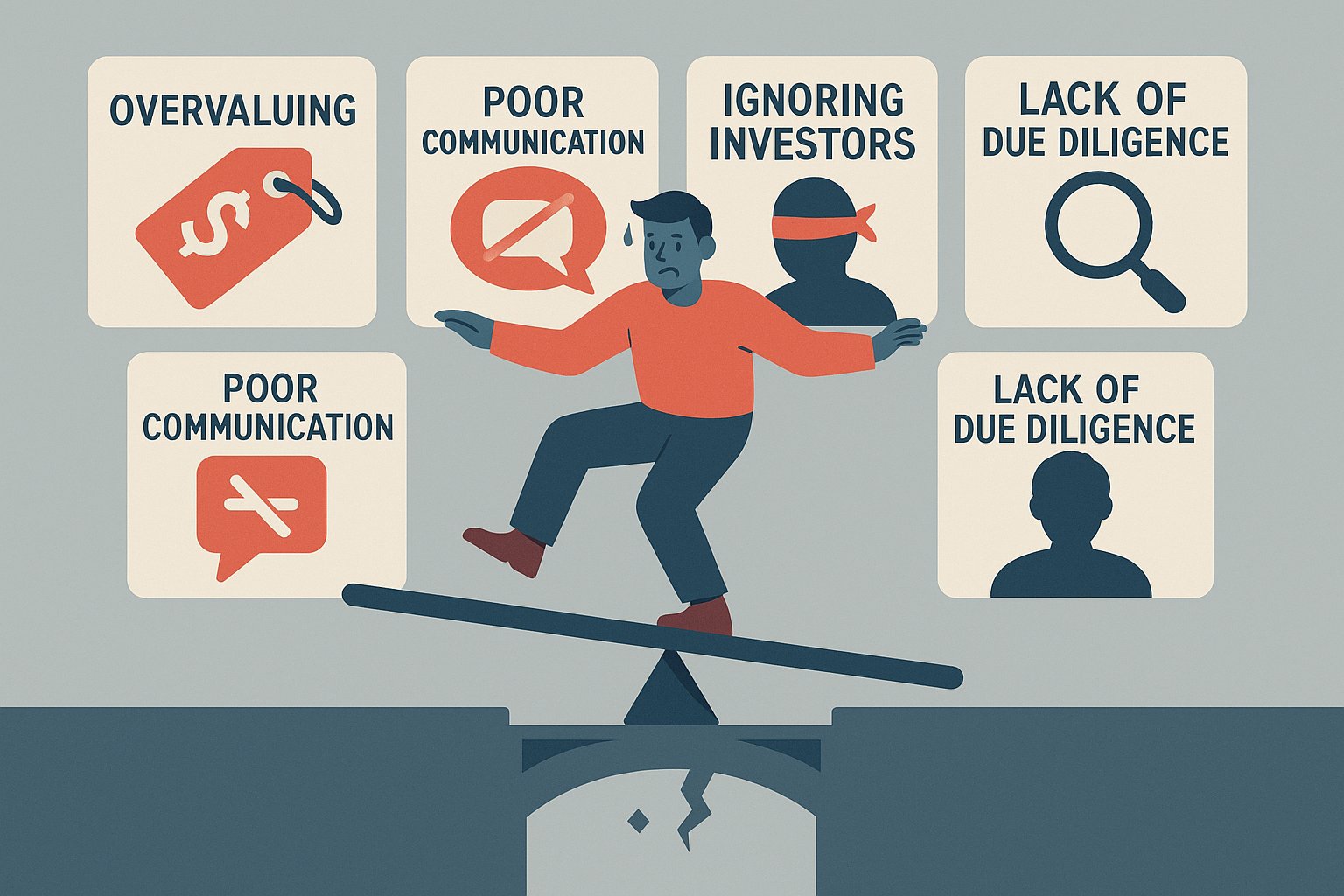Timing Your Equity Campaign for Maximum Impact
Launching an equity campaign is a pivotal move for any company seeking to accelerate growth, expand market reach, or develop new product lines. The excitement of putting your vision before potential investors is tempered by the reality that timing can significantly influence a campaign’s success. Seasonality, investor behavior, market cycles, and even cultural factors all play into when investors are most receptive, funds are most available, and competition for attention is at its lowest. Understanding these dynamics empowers founders to schedule their campaigns for maximum visibility, optimal fundraising velocity, and the strongest valuation.
In this comprehensive guide, we dissect the calendar to reveal the high-impact windows for launching an equity raise. We explore the rhythms of investor workflows, the seasonal peaks and troughs in deal flow, and the external economic and cultural events that can either amplify or dampen your campaign’s momentum. Beyond simple month-by-month advice, we look into nuanced considerations such as industry-specific cycles, geographic variations, and the interplay between public market performance and private capital availability. Whether you’re planning a seed round, a growth equity campaign, or a crowdfunded offering, this article will equip you with the insights needed to align your timing strategy with investor mindsets, maximizing both the capital you raise and the strategic partnerships you cultivate.
Understanding the Investor Calendar
Investors—be they venture capitalists, angel syndicates, or equity crowdfunding participants—often follow an informal but powerful calendar shaped by their own operational cycles. Institutional investors finalize budgets in the first quarter, set aside capital calls midyear, and may conserve resources during holiday seasons. Angel groups and crowdfunding platforms experience surges when interest rates are low or after major success stories capture headlines. Founders who comprehend these patterns can avoid the pitfalls of launching during a period of low investor engagement and instead tap into the natural ebbs and flows of investment activity.
The Benefits of a Q1 Launch
The first quarter of the year—spanning January through March—ranks among the most favorable windows for an equity campaign. Fresh off holiday breaks, many investors return recharged and ready to deploy capital against newly approved budgets. Pitch meetings that stalled in December often resume with renewed attention, and decision-makers who took time off are back at their desks, evaluating fresh opportunities. Moreover, strategic planning for the year typically crystallizes in Q1, making investors more attuned to how your campaign aligns with their sector themes and portfolio objectives.
Additionally, launching in early Q1 enables founders to build momentum well ahead of summer slowdowns. A January kickoff can generate initial commitments that cascade through February and March, establishing social proof and press coverage that sustain interest into the spring. For startups with product roadmaps scheduled for midyear releases, a Q1 campaign dovetails neatly with upcoming news, amplifying marketing synergies and creating compelling narratives for investor updates.
Spring Opportunities: Q2 Momentum
As the calendar turns to April, May, and June, the energy of Q1 often carries forward, making Q2 another attractive window—especially for companies in sectors that experience heightened demand in warmer months, such as travel tech, consumer goods, and event platforms. Investors who made early-year commitments may be ready to increase check sizes or participate in follow-on rounds once they see tangible progress. Networking events, accelerators, and industry conferences typically surge in spring, offering founders opportunities to meet new investors face-to-face and showcase customer traction.
Campaigns launched in Q2 also benefit from a strategic buffer before the summer slowdown. By securing initial commitments in April and May, you can navigate June’s gradual investor drift—when family offices and institutional teams begin to wind down operations before vacations—with a robust inbound pipeline. Integrating campaign milestones, such as hitting soft-caps or announcing partnerships, during this period keeps your raise top-of-mind even as calendars begin to clear.
Navigating the Summer Slump
July and August present a nuanced challenge. Many investors take extended time off, conferences thin out, and deal flow can grind to a near halt. Launching an equity campaign during this lull risks limited engagement, slower due diligence, and protracted close timelines. However, summer also brings unique advantages: with fewer competing campaigns, a well-targeted raise can stand out to active investors who remain at their desks. Additionally, for businesses tied to summer-driven markets—outdoor gear, tourism, or seasonal retail—summer launches can capitalize on peak operational data and real-time customer metrics.
To succeed in summer, founders should bolt-on persuasive proof points: strong midyear performance reports, user growth statistics, or product updates that resonate with active investors. Leveraging digital channels—webinars, virtual investor roundtables, and targeted outreach—can maintain momentum even when face-to-face meetings are scarce. Preparing exhaustive due diligence materials in advance ensures that interested investors can move quickly, turning the summer lull into a stealth-building phase ahead of the autumn rush.
Autumn Acceleration: Q3 Revival
As September arrives, investors return from summer breaks refreshed and poised to close deals before year-end planning begins. Q3—September through November—offers a second wind of fundraising energy. Public market reporting seasons, back-to-school cycles, and pre-holiday business planning create a sense of urgency, as firms finalize deployment strategies for remaining budget allocations. For startups whose products serve enterprise customers, summer pilots often conclude in Q3, generating case studies and ROI data that bolster fundraising narratives.
Founders can harness autumn momentum by aligning campaign milestones with industry events and thought-leadership opportunities. Showcasing results at conferences, publishing midyear reports, and initiating roadshows during Q3 energize investor pipelines. Additionally, preparing for Q4 holidays—where December typically sees a slowdown—means that Q3 closings strategically position companies to enter year-end with a robust cap table and momentum heading into new budget cycles.
Year-End Considerations: Q4 Strategy
The final quarter—December through early January—poses both risks and opportunities. Investor attention wanes as teams finalize year-end tasks, attend holiday functions, and shift focus to next year’s priorities. Launching a campaign during this period can lead to extended timelines and lower engagement rates. However, a well-executed Q4 campaign can capture the attention of investors eager to deploy funds before the calendar flips, particularly those seeking tax-efficient opportunities or aiming to lock in allocations for the coming year.
A successful year-end equity raise hinges on clear timelines and accelerated processes. Founders should articulate deadline-driven events—such as bonus round incentives for early closers or matching commitments tied to year-end goals—to instill urgency. Leveraging thematic narratives—like closing 2025 with strong backing—can resonate emotionally, transforming year-end cap-table builds into celebratory milestones that kick off the next year’s momentum.
Industry-Specific and Geographic Factors
While broad seasonality informs general timing, industry and geography introduce additional layers. In healthcare and biotech, conferences like BIO International or JPMorgan’s healthcare conference in January can dominate investor focus, making those weeks ideal for complementary launches. Fintech startups may time raises around major banking or payments events. Geographic considerations—such as national holidays, fiscal year-end dates, or regional investment cycles—also matter. For example, Japanese investors often adhere to a fiscal year running from April to March, and may allocate capital in different windows than U.S. or European firms.
Founders must research sector calendars and local investor behaviors to calibrate their timing. Partnering with advisors who have deep connections in target regions ensures that your campaign launch aligns with the precise weeks when deal teams are most active and receptive.
Aligning Product and Go-To-Market Milestones
Equity campaigns resonate most when tied to concrete business milestones. Launching a raise just before a major product update, regulatory approval, or a high-profile partnership announcement amplifies investor enthusiasm. Similarly, timing a fundraising campaign around the rollout of a new sales channel or the opening of a strategic market provides rich evidence of momentum. By synchronizing your fundraising timeline with operational achievements, you create a narrative crescendo—each milestone validating progress and reinforcing investor confidence.
Mitigating Timing Risks with Continuous Engagement
Even with optimal timing, unforeseen events—economic shifts, geopolitical upheavals, or sudden market changes—can impact investor sentiment. To mitigate timing risks, founders should cultivate continuous engagement strategies that transcend campaign launches. Maintaining a dynamic investor newsletter, hosting quarterly update webinars, and building relationships with lead investors well before launch ensure that interest stays warm. When the ideal window arrives, founders can draw on these established connections, shortening due diligence cycles and preserving fundraising velocity, regardless of calendar fluctuations.
Crafting a Timing-First Fundraising Plan
Intentional timing demands a fundraising roadmap that weaves together product, market, and investor milestones. Such a plan includes:
-
Identifying target launch windows based on your industry, geographic market, and seasonal patterns.
-
Backcasting key operational milestones—product launches, pilot completions, revenue targets—to align with chosen windows.
-
Building a six-month lead time for marketing, investor outreach, and data-room preparation, ensuring your team is ready for peak interest.
By anchoring your fundraising efforts in a clear timing-first framework, you avoid reactive campaigns and instead engage investors when they are most primed to commit.
Turning Timing into a Strategic Advantage
Choosing the best time of year to launch an equity campaign is both art and science. It requires deep understanding of investor calendars, industry rhythms, operational milestones, and external market forces. By strategically scheduling your raise in Q1 or Q3 for momentum, avoiding summer and holiday troughs, and synchronizing campaigns with product and market events, you position your company for maximum visibility and fundraising efficiency. Complementing timing strategies with continuous investor engagement, cross-functional planning, and adaptive marketing ensures that your campaign thrives even amid unexpected challenges. For founders ready to turn timing into an edge, this guide provides the roadmap—transforming calendar insights into capital-raising success.




